Photo

Although I really liked the work by Pollock we discussed easthetically, I used to think it would be crazy easy to make. In fact, this is what I used to think about most abstract (expressionist) art, as well as surrealist free drawings.
I was obviously wrong.
~ Mannes
0 notes
Link
Hugo Ball performs his poem "Karawane" at Cabaretier. Voltaire in Zürich (1916). Mirna
0 notes
Photo

"Woman and Man at the Telephone"
Inspired by Rodchenko's "Woman at the Telephone"
Just like the original work, my version shocks the public due to the unusual angle in which the photograph was taken.
-Sara
3 notes
·
View notes
Text
Clyfford Still lived during the 50s in New York where he became opposed to the art world. He broke his ties with commercial galeries. In 1961 he moved away from the art world into a farm in Maryland with his wife Patricia Still. He lived here till his death. He made works here that he did not show to anyone. He wrote a will in 1978 that left a portion of his work, along with his archives, to his wife Patricia and stated: “I give and bequeath all the remaining works of art executed by me in my collection to an American city that will agree to build or assign and maintain permanent quarters exclusively for these works of art and assure their physical survival with the explicit requirement that none of these works of art will be sold, given, or exchanged but are to be retained in the place described above exclusively assigned to them in perpetuity for exhibition and study.” He died two years later and his 2400 works remained closed from the public for two decades. In 2004 Patricia Still gave the works to the city of Denver who buid the Clyfford Still museum for it.
0 notes
Text
Collage
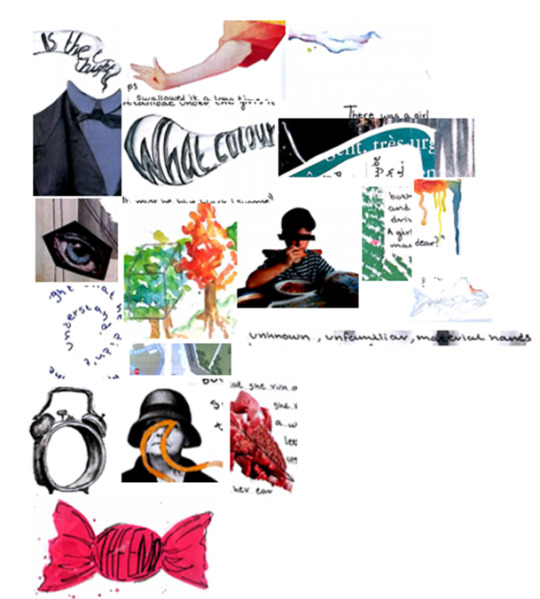
The collage is a combination of cropped illustrations I made for one of my short stories the story is based on dreams I had as also random thoughts. I chose to use the illustrations as a collage inspired by Dada. Dadaist often used magazines and newspapers for there collage I used my illustrations as they act as a magazine of my dreams. As the illustrations are based on dreams that come from my sub-conscious they can be linked to surrealism and the idea of surrealist artists to enter their subconscious and paint dream like paintings. Further some of the illustrations I made are also a collage of other images and some others are painted using water colours I have scanned the story and then cropped parts of it I combined the parts to form the image above.
Simone
0 notes
Photo

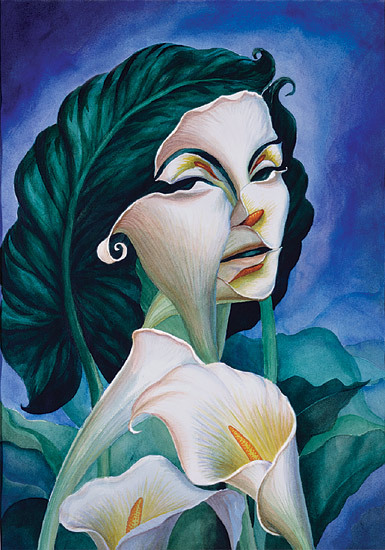
Octavio Ocampo is a Mexican Surrealist artist. He is well known for pioneering the “metamorphic” style. He superimposes and juxtaposes various images to create a larger image, resulting in dream-like figures and objects. I have attached two of my favourite paintings by him.
-Anna-Rosa
1 note
·
View note
Video
youtube
Aelita Andre (4 years old in the video, now 10 years old), who has had no formal education or art history training, uses a mix of colours, and techniques to create her works.
Similar to Jackson Pollock and other artists of the abstract expressionist movement, Aelita often drips paint on to canvases, swirling it around with her hands or brushes. She often glues found objects to her pieces to finish them off.
We should bear in mind though that she is the daughter of artists Michael Andre and Nikka Kalashnikova, and has been surrounded by canvases and acrylic paints before she even could walk. Is it “only” her work or are her parents responsible for making her into such a celebrated junior artists?
By Sinah
0 notes
Photo
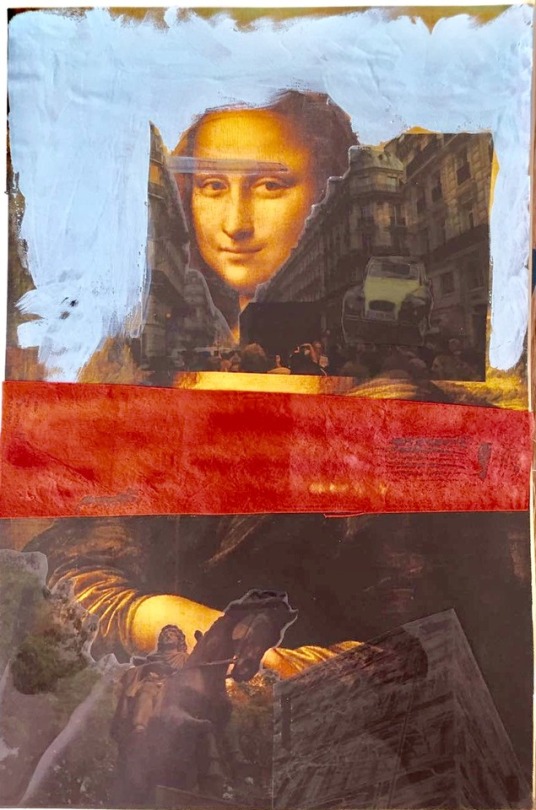

Study on Robert Rauschenberg’s piece: Pnaumonia Lisa (1982)
made in 2013
by Eleni Anastassiou.
0 notes
Text
Suspended
James Nares is known for his action paintings, who invented single brush strokes. He sometimes suspends himself to create a painting. His legs are locked in a extended ladder, and flies horizontally into the air 4,5 seconds when he is making the brushstrokes.
Minami Ozawa

0 notes
Photo

Dada style collage inspired by Hannah Hoch - Jessie -
2 notes
·
View notes
Photo
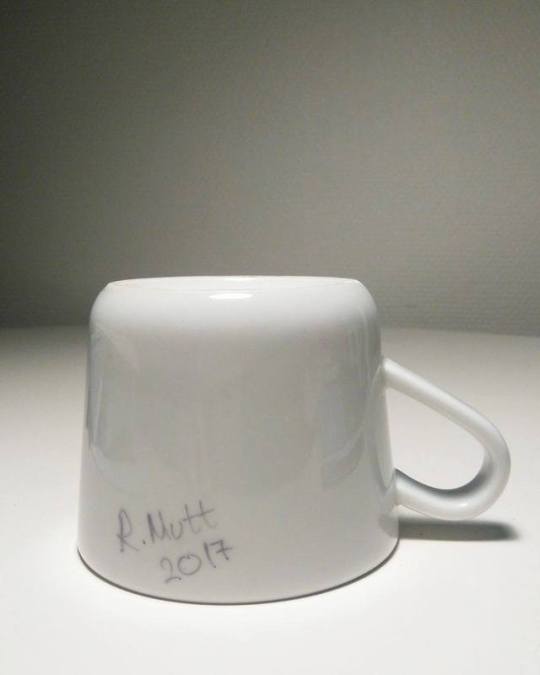
“The Cap”
inspired by “The Fountain”, Duchamp
-Angela Chaloska
1 note
·
View note
Photo

This church, called the Onze-Lieve-Vrouw-van-Lourdeskerk, was built in 1957 in Amsterdam by the architect M.J. Granpré Molière, who was the leading figure of the Delftse School. The Delftse School was part of the traditionalist movement, which emerged as a reaction against the Amsterdam School.
Architects working in the Delftse School thought that the Amsterdam School used too much decoration, because they believed that simplicity and harmony make a building beautiful. Buildings built in this style do not, therefore, attract much attention, which was precisely what the architects aimed for as they thought that architecture should be humble. Moreover, they believed that the function of a building should determine its form. As a result, public buildings built in the Delftse School are large, while houses are rather simple. Other important characteristics of the Delftse School are the use of brick, the use of dimension stone in constructively important places, and slanted roofs, making this style vastly different from the International School that we discussed in class. The architects working in this style were inspired by architecture from the Classical Period and Holland Classicism, and because of this sometimes elements from these art styles can be found in buildings from the Delftse School.
Many of the characteristics of the Delftse School can be found in this church. Its exterior is quite simple, the only decorative elements being the two columns, which signify the influence of Classical architecture and Holland Classicism on the Delftse School. The building is made from brick, but in constructively important places, which are in this case the columns and the doorframe, dimension stone is used. Moreover, the building has a slanted roof. This church is, therefore, a good example of the Delftse School.
Sophia Dumoulin
0 notes
Photo
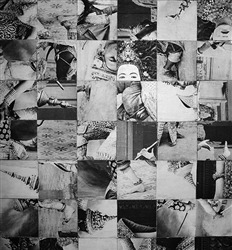

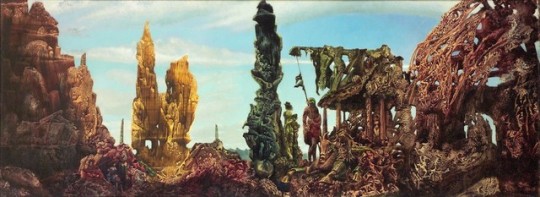
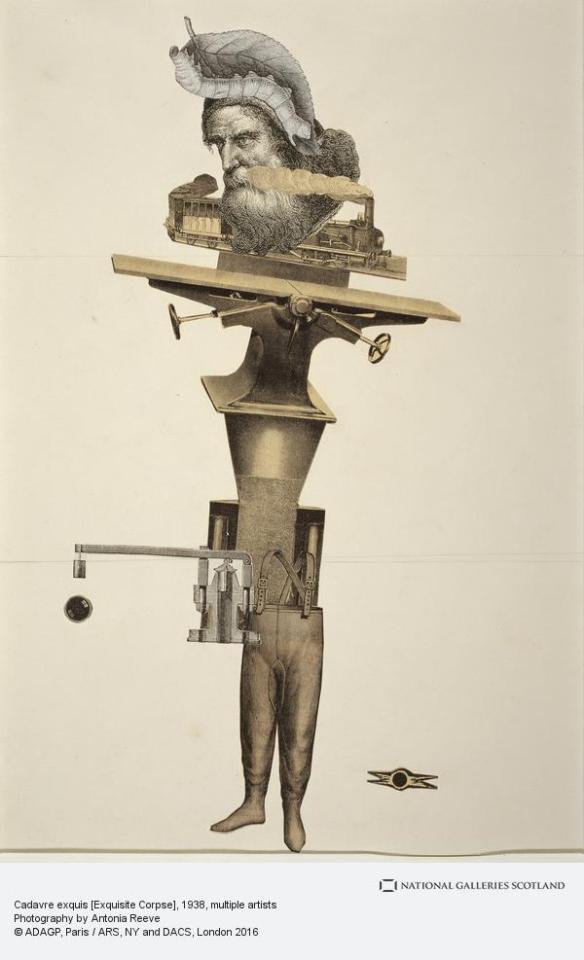
Cubomania: An Elephant a Day: Elephant no. 208 - Luca Gherasim
Calligram: Cheval - Guillaume Apollinaire
Decalcomania: Europe After the Rain - Max Ernst
Exquisite Corpse: Cadavre Exquis - multiple artists including André Breton
We briefly talked about a few Surrealist methods for creating art such as automatic drawing, but there exist many more, a couple of which you have likely used before, whether in art class or as a game with friends. Here I have listed four: Cubomania, Calligrams, Decalcomania and Exquisite Corpse. Cubomania was inspired by Cubism, and is basically the cutting-into-squares of an image and rearranging the squares so that basically nothing of the original image remains. The Calligram was an invention by Guillaume Apollinaire who used the text of poems to illustrated itself, arranging it into a shape which represents or correlates to the content of the poem. Decalcomania is a peculiar technique where a thick layer of paint is applied onto a canvas after which another type of material such as paper or foil is applied on top. After removing the second layer of material, a pattern in the paint will be visible which is used as a base for the rest of the painting. The last one, exquisite corpse, is one that I used to do with my friend in high school during maths. It is basically the process of creating an artwork, together with at least one other person, where you don’t know what the other is making so the outcome usually doesn't make any sense. A piece of paper is folded in half and one person uses one half of the paper whereas the other person (without knowing/seeing the other’s work) uses the other half. When folded back the paper reveals a collected result which is usually very unusual to say the least.
Angelien
2 notes
·
View notes


